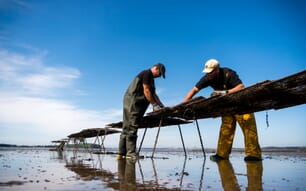
© University of Stirling
Blue mussel aquaculture is an important sustainable and eco-friendly food production method, but the industry has been facing challenges resulting in production fluctuations.
Mussel farming has a low environmental impact as they require no food input, require only simple growth substrates, and - by nature of being bivalves -they even clean the water around them. Additionally, they also sequester carbon from the atmosphere in their shells.
The University of Stirling study saw scientists carry out genetic analysis of samples from mussel farms on Scotland’s Atlantic coast. The researchers discovered regular genetic mixing results in changes to local populations - a finding which could help mussel farmers with site selection, stocking strategies, and management practices.
This could lead to more consistent production and improved profitability for the mussel farming industry, whilst contributing to the overall health and resilience of marine ecosystems in Scotland.
Researchers also found that the southwest coast is particularly important for growing mussel populations. The bivalve farm in Loch Eil - which belongs to the southern west coast cluster - serves as a source of mussel larvae, whilst areas in the Outer Hebrides and northern west coast, such as the mussel farms in Loch Roag and Badcall Bay, act as sinks, receiving larvae from other locations.
Sink stocks play an important role in maintaining genetic diversity within a population, providing benefits such as increased resilience to environmental stresses, improved adaptability to changing conditions, and promoting the long-term survival of the population.
“This is the first-time research like this has been done in Scottish waters. Understanding the connectivity among mussel populations and the roles of source and sink stocks is crucial for protecting mussel farming areas and ensuring that the mussel populations remain sustainable,” said Ana Corrochano-Fraile, a PhD researcher for the project.
“By identifying source and sink stocks, managers can implement measures to protect and maintain these areas to ensure the sustainability of mussel populations and the ecosystem as a whole,” she added.




